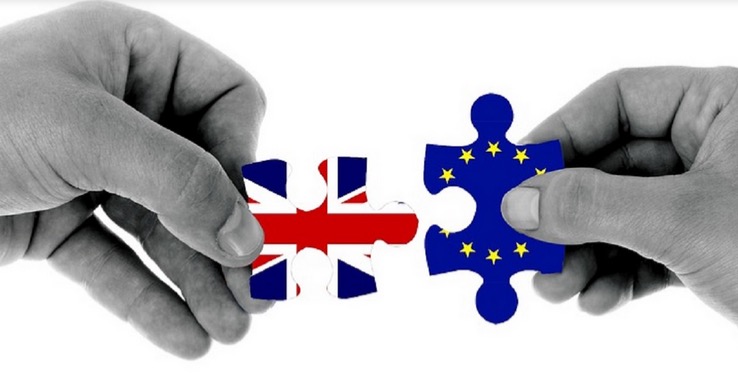by Kristina Hooper, Invesco Canada
Last week I had the pleasure of traveling in Europe, meeting with colleagues and clients in several different countries. It was a whirlwind tour, but it was well worth the jet lag to get an in-person account of the various issues facing Europe today. Below, I share three key takeaways from my trip.
- A silver lining to Brexit.
It’s clear that Brexit is nothing short of a disaster. The U.K. Parliament again rejected all options put forward by its members in a series of indicative votes last week. Then after a seven-hour cabinet meeting, Prime Minister Theresa May invited Jeremy Corbyn (the leader of the opposition) to help find a solution. As of this writing, nothing has resulted from the meetings, and the government seems unwilling to make any compromises. Don’t be misled by the U.K. manufacturing Purchasing Managers’ Index (PMI) reading. While it went up in March, it’s likely due to an inventory buildup resulting from uncertainty around Brexit. It’s more appropriate to pay attention to is U.K. service sector PMI, which fell into contraction territory in the month of March.
However, there is a silver lining. It appears that the U.K. has become a cautionary tale for other countries with antipathy towards the E.U. For instance, the concept of a “Quitaly” is no longer a popular idea in Italy – in fact, the possibility of leaving the E.U. is really no longer being discussed in Italy. That’s not to say the Italian government is not facing difficult issues; it’s just that whether or not to leave the E.U. is not one of them. And it’s important to have that distraction out of the way, as it enables Italians to focus on other pressing issues that require their full attention, such as budget deficits and debt levels.
- Unintended consequences of experimental monetary policy
The European Central Bank’s (ECB) policies, as with other central bank experimental policies, have created a number of undesirable and unintended consequences. When I was In Austria last week, I was fascinated to learn that there are a number of ongoing lawsuits against banks by borrowers whose mortgage rates have technically gone negative – the borrowers are attempting to force their respective banks to pay them for loaning money to them. No wonder banks are desperate for even the slightest normalization of monetary policy. Interestingly, ECB President Mario Draghi recently suggested that the ECB should consider alternative monetary policy measures that could deliver the benefits of negative rates but without the downside of negative rates.1 This implies to me that the ECB may be pondering experimental forms of monetary policy beyond what has already been utilized.
There is another problem with experimental, very accommodative monetary policy, and that is the dual mandate it creates for central banks. These central banks need to normalize monetary policy so there is enough “dry powder” to combat the next crisis – but without choking off the current expansion in the process. Some central banks seemed to be concerned that, in attempting to normalize in 2018, they may have tightened too much – and they are now backtracking. That certainly seems to be what is happening with the ECB given its change in posture this year. That also seems to be what is happening with the U.S. Federal Reserve and the Bank of Canada. For example, during a speech last week, Bank of Canada Governor Stephen Poloz refused to commit to the possibility of further rate hikes (reinforcing the recent language change in the meeting policy announcement). In addition, he suggested that the neutral range was not an appropriate target for investors to have in mind when it comes to the future direction of monetary policy. That seems to reflect a further dovish shift from the central bank. But these policy shifts beg the original question of what monetary policy tools will be available to use in the next crisis – and it suggests these tools could become increasingly experimental.
Experimental, accommodative monetary policy also encouraged the taking on of debt in the last decade because of ultra-low rates. It’s no surprise that Christine Lagarde, head of the International Monetary Fund, warned last week that years of low interest rates and high public debt since the Global Financial Crisis have left limited fiscal dry powder with which to act in the event of the next downturn. This only complicates the lack of monetary policy dry powder. I will discuss more on this in a future commentary.
- Hope for the eurozone
Eurozone economic data has generally weakened, but I believe there is the potential for stabilization and a recovery in economic growth. First of all, there’s a significant difference between manufacturing, which has been disappointing, and services, which has held up better. For example, the manufacturing Purchasing Managers’ Index (PMI) for the euro area was 47.5 in March versus 49.3 in February, the lowest since April 2013.2 However, services PMI for the euro area actually improved from 52.8 in February to 53.3 in March.3
The data implies that much of the current weakness can be attributed to the economic slowdown in China, which appears to be reversing. Consider that China’s manufacturing PMI for March has rebounded from February and is back in expansion territory. And China’s services PMI, which has remained in expansion territory, also improved for the month of March. This nascent trend was confirmed by the Caixin PMI data, which showed similar improvement for March over February. This suggests that if China continues to see improvement in its economic growth – which I expect – then that could likely impact the eurozone’s economic growth picture, albeit with a lag.
In the meantime, unemployment is relatively low compared to historical levels for most eurozone countries. While I was in Paris, I was encouraged to see that the “yellow vest” protesters’ numbers are not only dwindling, but that they only protest on weekends – something many outside observers may not realize – because these protesters are reportedly employed during the week. It seemed that media coverage had exaggerated how problematic the protests are. In addition, while the protesters have shown great persistence thus far, I can’t help but wonder if they are likely to succumb to “protest fatigue” given that they are employed. However, we will want to follow the situation closely as a significant hike in electricity costs is planned – which might provide a jolt in the arm to yellow vest protesters.
Looking ahead
There are many data releases, elections and other important events occurring in the coming week. However, I would highlight these three:
- This week will be another critical one for the U.K. Brexit is currently on track to occur this Friday, April 12, if the European Union does not grant an extension. While Prime Minister May has requested another extension through June 30, the E.U. has not yet agreed to one. We will want to follow the situation closely to see if the U.K. can win another extension and for how long. In addition, we will want to see if the odd couple of May and Corbyn can arrive at some grand solution, although I don’t hold out much hope. In my view, it seems best for the U.K. to get a long extension (which is what the E.U. reportedly would prefer) so that it has time to figure out a solution. Unfortunately, that runs counter to May’s strategy, which is to allow very little time before the Brexit date in order to increase the chances her plan will be supported because it is better than the alternative of a “crash out.” However, I am hopeful that, this time around, the U.K. takes a longer extension and considers a broader spectrum of possible solutions.
- The European Central Bank will meet this week. It will be interesting to see if they do in fact arrive at more monetary policy accommodation and, if so, what form it would take. However, I suspect that, even if the ECB becomes more accommodative, it might not have the desired effect on the economy and markets, given that Draghi is a lame duck ECB president, and the next ECB leader could potentially roll back any policies implemented by Draghi.
- Federal Open Market Committee (FOMC) minutes from the March meeting will be released this week. That meeting was very significant in that it underscored and made more pronounced the Federal Reserve’s policy shift. The minutes should provide us with insight on the Fed’s motives for this shift. I suspect they will largely center around concerns over global growth and the risks created by ongoing trade conflicts, and should be very illuminating in helping answer the question of why the Fed has abandoned normalization and turned more dovish.
This post was originally published at Invesco Canada Blog
Copyright © Invesco Canada Blog















